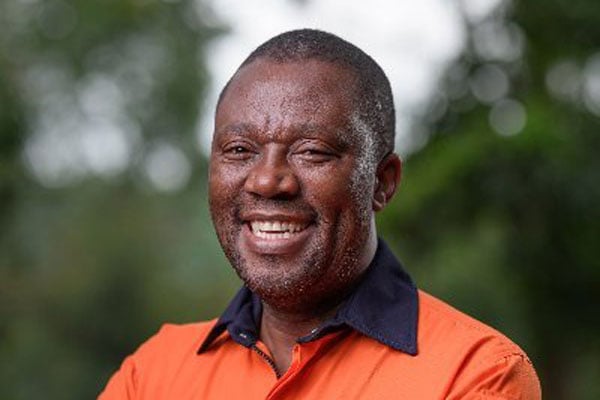Investor chops Busoga mineral value to $16b

Mr Patience Singo, the country manager of Rwenzori Rare Metals, a private mining firm. Photo/Courtesy
What you need to know:
- There is potentially a maximum of 340,000 tonnes of rare earth oxide available to mine.
Rwenzori Rare Metals (RRM), a private mining firm that was licensed to carry out exploration of rare earth mineral in Busoga Sub-region, has clarified on the value of the minerals resource base for Makuutu Rare Earth Project.
In a July 12 statement, the company’s country manager, Mr Patience Singo, revealed that the value of the mineral is estimated at $16b (Shs60.1 trillion).
“The potential value of the entire resource base is around $16 billion, note significantly lower than erroneously quoted figure of $370 billion and nowhere near the value of Uganda’s oil and gas resources,” Mr Singo said.
“The company has seen and received numerous media reports about the Makuutu Rare Earths Project in Busoga Sub-region which have attempted to highlight the benefits and concerns related to the project. While attempts to communicate the benefits and clarify any misunderstandings about the project are appreciated, there are a few factual errors and misconceptions that must be addressed,” he added.
Mr Singo said erroneous information may raise unrealistic expectations in the Busoga area and could jeopardise the development of the project due to the community and policy makers having incorrect facts.
He noted that the company resource is 532 million tonnes at 640 ppm Total Rare Earths Oxide (TREO).
“This means there is potentially a maximum of 340,000 tonnes of rare earth oxide available to mine,” he said.
The mining firm plans to develop an operational mine in 2024, with a gradual ramp up to mining approximately 4,000 tonnes per annum over the ensuing three-year period.
Mr Singo said the company will consider further development and expansion of the project based on the success of the initial mining operations.
The project is expected to benefit the community through royalties, tax revenues and employment opportunities.
“The project, in conjunction with government and non-government organisations, will contribute to the development of social and economic infrastructure such as housing, roads, medical facilities, schools, business opportunities, improvements in farmland, improvements in farming skills and technology, among others,” he said.
The investor, however, noted that they are in the process of applying for the mining lease as required by the Ministry of Energy and Mineral Development.
According to the provisions of the Mining Act 2003 and Mining Regulations 2019, the company must prepare and submit a full feasibility study and assessment by appropriate experts, conduct an Environmental and Social Impact Assessment (ESIA), which details the environmental and social impact assessment of the planned operations and the environmental restoration plan.
The ESIA must be approved by the National Environment Management Authority, a government agency under the Ministry of Water and Environment.
The company is also expected to secure landowner consent, develop a Resettlement Action Plan (RAP) that will be used to mitigate the probable resettlement impacts to the project affected persons.
Production
During her fact-finding mission in Busoga last month, Energy Minister Ruth Nankabirwa backed the mining activities and revealed that production of minerals would start in 2024.
The minister also revealed that the planned exploration of rare earth minerals in Busoga requires land access and support from the community.
She reiterated that the affected people will be compensated and resettled before the mining company can utilise the land.
About the minerals
The rare earth minerals include cerium dysprosium, erbium, europlum, gadolinium, holmium and lanthanum.
The discovered deposits are one of the largest in the world, according to the State minister for Energy, Mr Sidronius Opolot.
Currently, Southern China is said to be the largest producer.
This precious minerals were discovered in 2006, by a South African company, Fugro Airborne surveys, that was contracted by government for data collection.
The government granted Rwenzori Rare Metals Limited a licence to carry out exploration in Iganga, Mayuge Bugiri and Bugweri.




